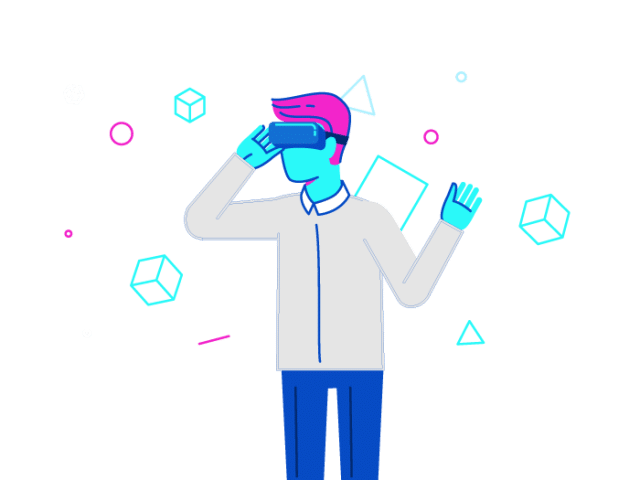QualityLogic Attends CES to Investigate Virtual Reality Application Testing
Our CTO, Jim Zuber, recently attended CES to explore the world of virtual and augmented reality. He came back with several observations about VR and AR technology and the testing challenges they present.
Virtual Reality (VR) and Augmented Reality (AR) application testing is becoming a sizable portion of our testing service activity. With this in mind, I headed to the Consumer Electronics Show (CES) in Las Vegas to check out the VR/AR specific “marketplaces” at both the main convention center and the Sands Expo.
The vast majority of VR/AR exhibitors were focused on the hardware side of things. This includes headsets, 360 cameras, haptic feedback gloves, and lots of other innovate devices to improve your sense of immersion within a VR application (smell, mood, sound, wind, etc.).
I was able to try an array of headsets ranging from toys that instantly gave me motion sickness to an 8K headset that put you underwater in stunningly photorealistic coral reef. Oculus was a no-show, but HTC had a huge presence in a large ballroom at the Wyatt Hotel focused on the release of the Vive Pro (80% resolution improvement, wireless option).
A variety of Vive application vendors were demoing their wares with the new Vive Pro and I got a chance to try almost all of them. I was most impressed with a couple of training VR applications focused on surgery and forklift driving. Also interesting was a social media application set in one of the scenes from the upcoming motion picture “Ready Player One”. The movie itself is all about the fictional “OASIS” VR world. I read the book and it gives you a believable sense of how VR could change our world and, to boot, it is quite a compelling story.

At every booth I visited I asked how they do VR application testing and whether test automation played a role in their VR testing. The short answer from everyone was that they utilize a brute force manual testing methodology and most doubted that automation was practical given the dynamic nature of the medium. I’m not quite so pessimistic about automation, although I do agree it is a non-trivial challenge. Obvious candidates for automation could include setup configuration of constrained test environments that simplify expected behaviors and relatively static content that might be tested using traditional mouse and keyboard automation techniques.
Beyond these items, we start drifting into a bit of science fiction. Think artificial intelligence that can do auto object recognition coupled with AI guided test scripts that spoof 6 degree of freedom HMD inputs and wand movements. I suspect as our VR/AR testing engagements continue to expand, so will our experimentation with VR test automation.
My overall sense of the VR space was that it wasn’t quite ready for prime time. Yes, there are many compelling immersive games, engaging social environments, and useful commercial VR applications available today. However, it is the enthusiasts and earlier adopters that are driving things forward.
There is a huge amount innovation happening in this market. Exciting days are ahead for VR and QualityLogic is looking forward to helping our customers get there by providing knowledgeable, virtual reality application testing.